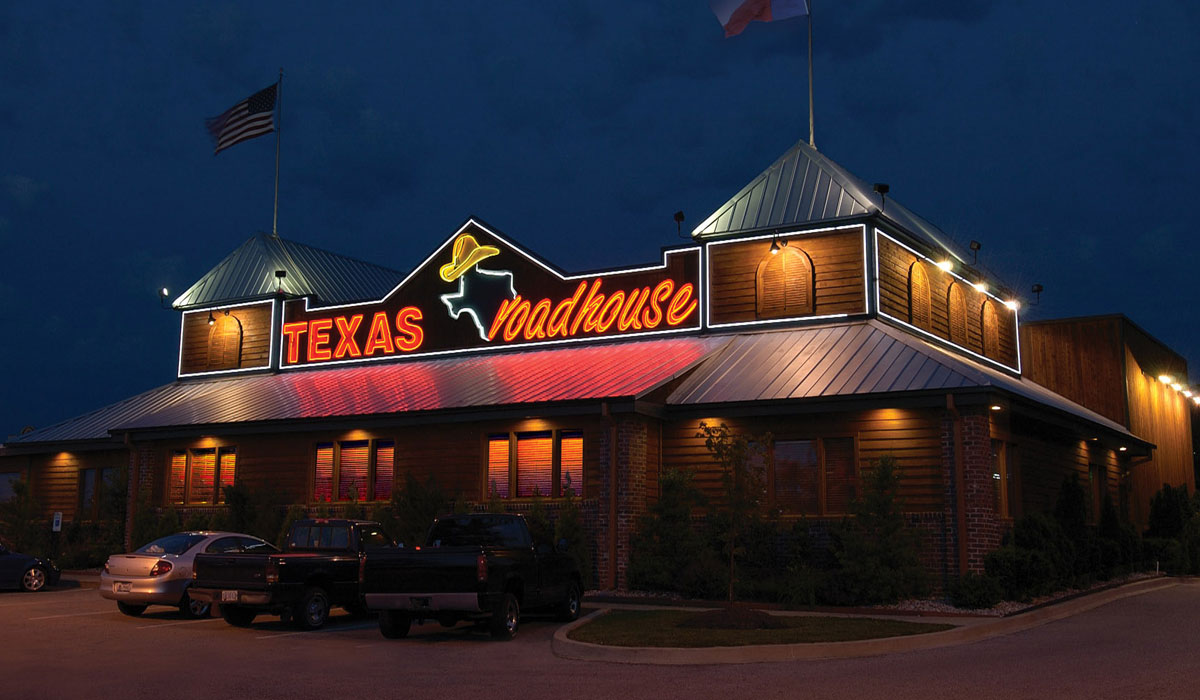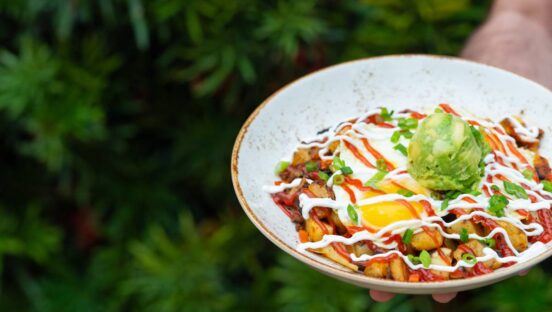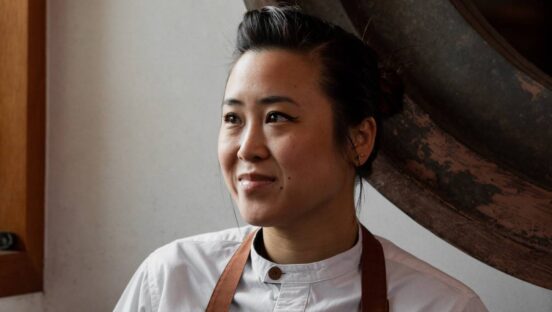











The U.S. is now 15 months into the pandemic.
In that timespan, the identity and mindset of full-service restaurants everywhere have shifted in some way—if not dramatically. While COVID-19 still lingers, the light at the end of the tunnel has become brighter by the week. With cases dropping and vaccinations increasing, optimism has soared back. It’s quite the 180-degree turn from early April 2020 when dine-in sales slid to zero and mass furloughs occurred left and right.
The much-anticipated new era of dining is well on its way. But before the industry reaches that point, FSR took a look back at some significant factors that defined the longstanding pandemic. Here are 11 of the biggest storylines to come out of COVID.
It’s rare nowadays to pass by a restaurant without seeing some variation of a “help wanted” sign posted on the window. Jeff Melnick, president of the 437-unit Boston’s Pizza Restaurant & Sports Bar, told FSR in May that “Everything you read and hear is true.” For Boston’s in particular, some restaurants are unable to open for lunch or are closed certain shifts each week.
Larger companies like Applebee’s, IHOP, and Red Robin, have all held National Hiring Days in an effort to recruit talent. In April, BJ’s Restaurants noted that sales are starting to outpace staffing levels. CFO Greg Levin said, “They’re not where we like them to be in regards to our traditional staffing models as much as our [Net Promotor Scores] are up and everything seems to be going in the right direction.”
According to a Black Box Intelligence poll of more than 360 operators, 57 percent said higher pay through unemployment was the main driver. But that issue may soon come to an end as half of states are set to end the $300 weekly boost as early as June 12 and as late as July 19—both months ahead of the September 6 expiration date.
In Black Box’s June 3 weekly update, the company said high employee turnover rates remain a concern for full-service restaurants and are undoubtedly a driving factor behind the staffing difficulties reported by many companies in this space.
As was reported for limited-service the previous week, there are substantial differences in employee retention between different regions and states of the country. Regional factors such as minimum wage and unemployment rates contribute to create a different set of circumstances restaurants need to contend with at the local level.
What does this look like: States with the highest full-service employee turnover are experiencing rates over twice as large as states that are obtaining the best retention results, Black Box said.
Meanwhile, the states with the highest restaurant employee turnover rates in full-service during Q1 2021 were Mississippi, Alabama, South Dakota, Georgia, South Carolina and Tennessee. All these states except for South Dakota were in the list of states with highest limited-service turnover during the quarter. The states with the lowest turnover rates for full-service restaurant employees during Q1 were Hawaii, Nevada, Connecticut, Maine, West Virginia, Washington, and California.
In order to stimulate the economy, the federal government has shelled out billions of dollars to keep businesses afloat.
The first crack at this was the Paycheck Protection Program, which was part of the $2 trillion CARES Act passed in late March. The program closed to new applicants on May 28, three days ahead of schedule. As of June 1, the PPP distributed nearly $800 billion to more than 8.5 million companies and nonprofits. It wasn’t without criticism however. Public companies like Shake Shack and Ruth’s Chris obtained loans, but were eventually pressured to give them back.
The most-targeted relief came via the $28.6 billion Restaurant Revitalization Fund, although that has run into some trouble, as well. The portal opened on May 3 and closed May 24, with more than 362,000 applications seeking $75 billion in funding. The National Restaurant Association, Independent Restaurant Coalition, and other organizations are pleading with Congress to add more money.
The PPP and Restaurant Revitalization Fund were two of eight disaster relief programs established by Congress to help small businesses. The others include Economic Injury Disaster Loan (EIDL), EIDL Advance, Targeted EIDL Advance, Supplemental EIDL Advance, Shuttered Venue Operators Grant, and SBA Debt Relief program.
Restaurants have faced a challenging environment when it comes to commodity costs.
The price of beef (14.5 percent), pork (9.6 percent), fresh fruits and melons (9.3 percent), processed poultry (5.4 percent), and dairy products (3.2 percent) all increased from March to April, according to the Bureau of Labor Statistics.
The saturating chicken category—namely the growth of virtual wing brands and chicken sandwiches—is having a notable effect on prices. Using data from market research firm Urner Barry, the Wall Street Journal reported in early May that boneless chicken breast was trading at $2.04 per pound compared to roughly $1 per pound last year. The average price is approximately $1.32 per pound.
To mitigate pressure, brands have tested and rolled out products using more of the bird. For example, Smokey Bones’ virtual brand the Wing Experience recently introduced Whole Wings, which consists of a drumstick, flat, and wingtip. Smokey Bones said the concept will continue to serve traditional wings, but warned they may be unavailable at times.
COVID has seen shakeups in the C-suite—some planned, others not.
Applebee’s and IHOP parent Dine Brands revealed in May 2020 that it would not renew former CEO Stephen Joyce’s contract when it expired on February 1. When asked about his potential replacement in late October 2020, Joyce said the situation was “not that delicate at all.” Less than a month after Joyce’s comment, the company announced John Peyton, president and CEO of Realogy Franchise Group, would take the reins at Dine Brands, effective January 4. Peyton had served as president of Realogy Franchise Group since 2016. The company, a wholly owned subsidiary of Realogy Holdings Corp, franchises real estate brands, including Better Homes and Gardens, The Corcoran Group, ERA, Sotheby’s International Realty, and Coldwell Banker Commercial.
An unexpected shift occurred in March when news broke that Texas Roadhouse founder Kent Taylor took his own life after a battle with post-COVID symptoms. Jerry Morgan, a 23-year veteran of the company, was named CEO. In the company’s first update since Taylor’s passing, Morgan said Texas Roadhouse is hurting and healing, “but we’re strong to the core.” The new leader added, “We feel like we have a job to do, and we’re very excited about finishing this dance for Kent.”
The National Restaurant Association reported in May that roughly 90,000 restaurants were still closed, putting into perspective just how much COVID has crashed the industry.
San Francisco’s Cliff House, founded 157 years ago on the edge of the Pacific Ocean, announced in December that it was closing permanently. Dan and Mary Hountalas, operators of The Cliff House since 1973, attributed the shut down to the COVID pandemic and issues with its landlord, the National Park Service (NPS). Additionally, Del Posto, an upscale Italian restaurant in New York City, will permanently shut down after being sold, according to the New York Times. The new ownership group plans to transform the former Manhattan space into three different entities: a cocktail bar, a wood-burning pizza brand, and an Italian concept similar to Del Posto.
The intense burden has also led to a long list of bankruptcies in the full-service industry, from legacy chains to large franchisees. For example, the 63-year-old Sizzler filed bankruptcy in September, stating that its “current financial state is a direct consequence of the pandemic’s economic impact.” Also, Golden Corral’s two largest franchisees 1069 Restaurant Group and Platinum Corral, sought bankruptcy protection six months apart. The two companies shut down nearly 30 stores combined.
When the bulk of the pandemic slammed the U.S. in March 2020, casual-dining brands across the country were forced to close dining rooms and pivot to an off-premises model. Many had to quickly implement a more sophisticated takeout and delivery program by signing with an online ordering platform and tacking on third-party delivery aggregators.
But the trend was simply an acceleration of what was already on its way, and numerous chains believe their off-premises sales will remain high above what they were before COVID. For Cracker Barrel, off-premises increased 144 percent compared to Q3 2019, and represented roughly 23 percent of sales. Within the off-premises program, 55 percent is takeout/curbside, 25 percent is delivery, and 20 percent is catering. In April, off-premises sales volumes actually outperformed the prior year when dining rooms were closed. In addition, World of Beer’s off-premises channel increased from less than 1 percent of sales to about 4 percent, or more than a 300 percent increase. CEO Paul Avery expects off-premises to be around 6 to 8 percent of sales by the end of 2021, and he anticipates a lot of incremental revenue to come with that growth.
The onset of COVID in 2020 was a swift and tortuous nightmare for full-service brands.
Sit-down places experienced transaction declines of 79 percent in the week ending April 5 compared to same week year ago, according to the NPD Group. Data from the U.S. Census Bureau shows that restaurants and bars across the industry have lost more than $280 billion in sales since the pandemic began.
But with increasing vaccines, lowering COVID rates, and lessening restrictions, sales are surging as the industry heads into the summer. Some chains are even setting records. For instance, Applebee’s believes it achieved two of its highest-volume months ever in March and April, even though the database only goes back 13 years. Another positive sign is that Q1 saw 18,217 restaurant and food openings, which was 5 percent better than Q1 2020 and only 4 percent below Q1 2019.
Food and drink places earned $64.9 billion in April, the highest sales month since the pandemic began in March 2020, according to the Census Bureau. The industry has come a long way from the beginning of the pandemic last year, when sales fell to $46.1 billion in March 2020 and a pandemic-low of $29.9 billion in April 2020.
The pandemic stopped brands in their tracks, but not so much that it stood in the way of growth.
Ynot Italian, a seven-unit chain based in Virginia, recently unveiled an off-premises only, express model, and plans for franchise growth. CEO Tony DiSilvestro anticipates three openings in 2021 and as many as two full-service and five to 10 express units each year beginning in 2022. Perkins Restaurant & Bakery, which has been open for more than 60 years, announced a national franchise initiative in mid-May. Plans for advanced concept innovations are already in the works with industry renowned design firm Louis & Partners at the helm.
The ONE Group, parent of STK and Kona Grill, believes there’s opportunity for roughly 200 STK restaurants globally across large and mid-sized markets. An STK restaurant opened in Scottsdale, Arizona, in early January, and is averaging $190,000 in weekly sales. On May 1, STK opened its first airport location in Mexico. In the first full week of sales, the location earned roughly $150,000 despite opening during off-peak season. Three more STK stores and four managed F&B venues are under construction. Between 2021 and 2022, The ONE Group plans to open 13 new stores, including eight STK locations and five F&B venues.
The most obvious menu innovation of the pandemic has been the release of numerous virtual concepts.
Chili’s, Applebee’s, Cracker Barrel, Red Robin, BJ’s Restaurants, Denny’s, Smokey Bones, and more released delivery-only brands to take advantage of kitchen space and create an incremental sales channel. Chili’s went as far as saying its virtual concept It’s Just Wings will develop into a $150 million brand.
Apart from its virtual brand, Cracker Barrel has done something it never has before—sell beer and wine. The program was in 405 stores at the end of April, and the chain expects the program to reach about 600 stores by the end of Q1 2022. Six of the past seven states that added beer and wine have lifted the mix. Markets like the Northeast and Texas are running mixes that are doubling the average of states that rolled it out earlier. Cracker Barrel’s is optimistic that beer and wine can reach 2 percent of dine-in sales.
Then in June, Chili’s decided to join the chicken sandwich wars with its Chili’s Chicken Sandwich. The product features a new Secret Sauce, topped with a tomato slice, a crispy hand-battered and hand-breaded fried chicken breast that’s covered with even more Secret Sauce, and lettuce. The sandwich is held together with two buttered and toasted brioche buns.
Quite a few notable deals have been struck amid the crisis.
Fertitta Entertainment, the parent company of the Golden Nugget casinos and Landry’s, revealed early in 2021 that it will merge with Fast Acquisition Corp. and go public. The deal will value the company at $6.6 billion. The company is set to return to the stock market 11 years after Fertitta took the company private. In the brand’s 35-year history, it has executed more than 25 acquisitions, including six public companies valued at more than $3 billion.
Friendly’s, Legal Sea Foods, Brio Italian Grille and Bravo Italian Kitchen, and Logan’s Roadhouse and Old Chicago, were among the handful of chains to exchange hands for millions of dollars during the pandemic. Some more M&A may be on the way. Famous Dave’s parent BBQ Holdings indicated in April that it has a “vision to build a diverse portfolio of established food and beverage concepts” and that it’s “currently analyzing multiple opportunities.” In addition, J. Alexander’s has sought strategic alternatives for nearly two years.
Another major piece of news was Cracker Barrel cutting ties with Punch Bowl Social in March 2020 after saying it would invest as much as $140 million eight months prior. The chain said at the time that it wanted to focus on its core company, and refused to save Punch Bowl from foreclosure.
Restaurants and government agencies butted heads long before the pandemic. But there have been some intense issues that have bubbled up during COVID.
In December, The Cheesecake Factory reached a $125,000 settlement after being accused of misleading investors about the condition of the brand during the early days of the pandemic. In filings dated March 23 and April 3, The Cheesecake Factory said units were “operating sustainably,” but the SEC described the messaging as “materially false and misleading.” The brand omitted that it was losing roughly $6 million in cash per week and that it only had 16 weeks of cash remaining.
In a more recent example, Sizzler is suing the U.S. Small Business Administration to obtain a second Paycheck Protection Program loan worth $2 million. The legacy brand argues the SBA unfairly blocked funds because of its bankruptcy status, even though new guidance states a bankrupt company can receive money if a reorganization plan has been confirmed. At the onset of the pandemic, Sizzler applied for a $3.9 million PPP loan, and received the funds on April 13, 2020. Throughout 2021, Sizzler applied for a second PPP loan three times, and was unsuccessful.












